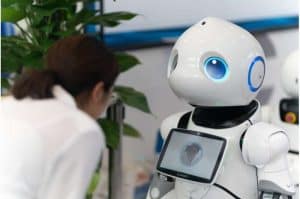
For three decades now, carbon emissions from cars have been a political and social issue; there are reporting obligations for manufacturers, government regulation, and much accompanying research. A similar approach might be taken with a modern product that is spreading at an enormous pace and also has an impact on the climate: “artificial intelligence” (AI), software based on adaptive algorithms for various purposes, from self-driving cars to automatic image recognition and translation tools to optimizing logistics. Here, too, climate research is now beginning to measure the carbon footprint. A framework for this is provided by a new study with contributions from the Berlin-based climate research institute MCC (Mercator Research Institute on Global Commons and Climate Change). The study is published in the journal Nature Climate Change.
“AI is comparable to a hammer in terms of its impact: it can do beneficial things, but it can also break a lot,” says Felix Creutzig, head of the MCC working group Land Use, Infrastructure and Transport and co-author of the study.
“That is why it is high time to steer them in the right direction through wisely set rules. This is true not only with regard to effects on the labor market or data protection, but also to a large extent with regard to the climate. Here, for the first time, we provide an analytical framework to guide policymakers in capturing as fully as possible the various impacts of AI on greenhouse gas emissions.”
These impacts fall into three categories:
- The direct impacts, i.e., the carbon emissions from the operation of end-user devices, servers and data centers for AI development and use,
- The immediate impacts of specific AI applications on greenhouse gas emissions in various areas of everyday life and the economy, and
- System-level impacts of AI through structural change, e.g. through increased demand for certain products and services, new dominant suppliers in individual markets, and lifestyle changes.
The immediate and system-level impacts of AI applications can be both favorable and unfavorable for the climate, this is illustrated with many examples and systematically analyzed.
For example, by means of such applications, buildings can be designed in a more climate-friendly way, the development of next-generation batteries or climate-friendly materials can be accelerated, the conservation of forests and coasts can be monitored, and information on corporate climate risks can become more transparent than before. Many of MCC’s recent climate studies, which condense scientific findings from very large amounts of data, would also not have been conceivable without AI.
On the other hand, AI can also harm the climate: an example is the so-called Internet of Cows, an application for optimal logistics in the livestock sector—which is responsible for 9 percent of global greenhouse gas emissions. At the system level, the progress in autonomous driving brought about by AI, for example, can still prove problematic if it means that climate-friendly alternatives to private cars and trucks have less of a chance of prevailing on the market.
Like cars and other physical products, the production and use of AI applications are likely to be scrutinized for their carbon footprint in the future. “Research areas such as life cycle analysis and industrial ecology can now build on the AI-specific considerations in our study,” explains Lynn Kaack, Professor of Computer Science and Public Policy at the Hertie School in Berlin and lead author of the study.
“In the future, we would like to be able to assess how greenhouse gas emissions are changed by individual AI services, by companies, and by specific political measures. If this could be better quantified, governments could, for example, introduce corresponding reporting obligations for the economy, define priorities for funding and create incentives for AI applications that help address climate change.”
